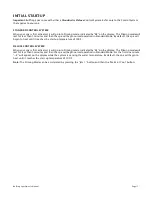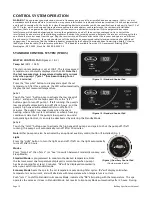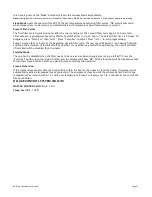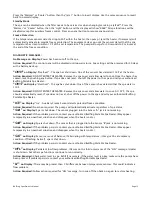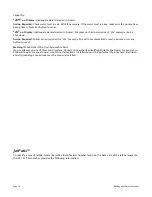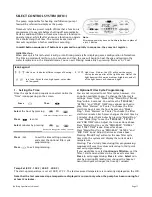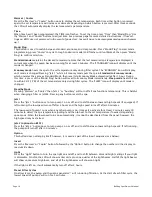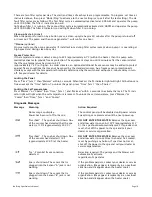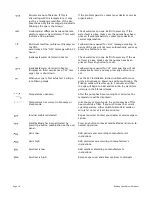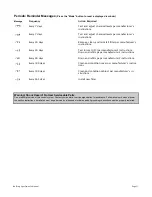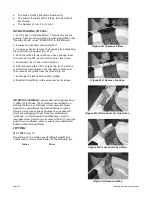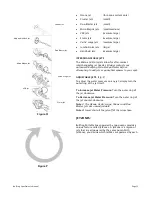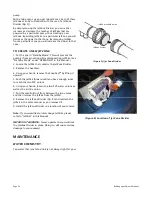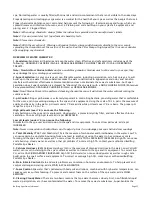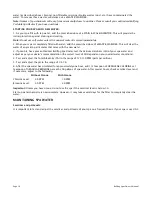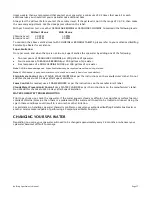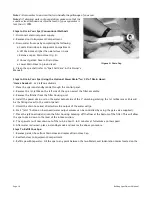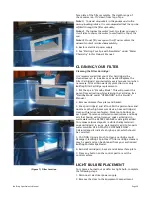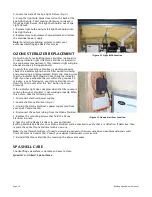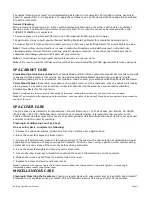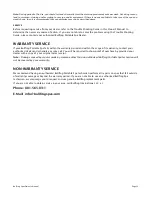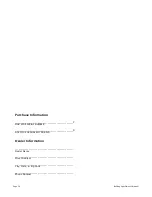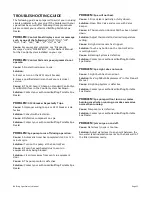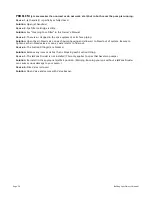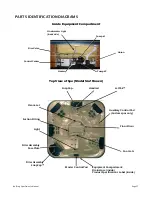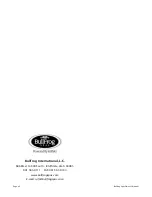
Page 25
Bullfrog Spas Owner’s Manual
ac
spa. Normal tap water is usually filled with minerals and micro-contaminants that are not visible to the naked eye.
Properly testing and treating your spa water is essential for the health of your spa as well as the people that use it.
Proper chemical maintenance can control and help prevent the following: 1. Bacteria, algae and fungi, which can
spread disease and infection to humans; and, 2. Staining and scale build-up on your spa shell, equipment, and
piping; and, 3. Clogged filters.
Note 1:
When using chemicals, always follow the instructions provided on the manufacturer's labels.
Note 2
: Use an accurate test kit to perform all chemistry tests.
Note 3:
Never mix chemicals.
Note 4:
With the exception of Chlorine or Bromine Tablets, always add chemicals directly to the spa, evenly
spreading the chemicals over the surface of the water. Run the Filter Pump at high-speed for 15 or more minutes
after applying any chemical.
OVERVIEW OF WATER CHEMISTRY:
1. Sanitation:
Sanitizers kill bacteria and keep the water clean. Effective and safe sanitizers include any of the
following: GRANULAR CHLORINE (Dichlor), GRANULAR BROMINE, CHLORINE TABLETS (TriChlor) OR BROMINE
TABLETS.
Note: Non-trichlor chlorine tablets
and/or non-dichlor granular chlorines must not be used in your spa, they
may damage the spa, voiding your warranty.
2. Super-Sanitation:
As your spa is used, non-filterable wastes, including perspiration, oils, hair sprays, etc, will
build up in the spa water. These substances make the water unattractive in appearance and odor, and can also
interfere with sanitizer effectiveness. Normal sanitation does not eliminate these waste substances, but Super-
Sanitation does. Super-Sanitation is achieved by "shocking" the spa water with a NON-CHLORINE SHOCK (Potassium
Peroxymonosulfate), GRANULAR CHLORINE (Dichlor) or GRANULAR BROMINE.
Note:
Non-Chlorine Shock is the preferred shocking chemical because it will shock the water without raising the
sanitizer level.
3. pH Control:
Proper pH balance is extremely important in controlling bacteria, providing water that's comfortable
for the user, and in preventing damage to the spa and its equipment. Using the scale of 0-14, pH is the measure of
acidity and basicity in the water. pH levels under 7.0 are acidic while pH levels over 7.0 are basic. The proper pH
range for a spa is 7.4 to 7.6.
High pH levels (over 7.6) can cause the following:
Scale build-up on the spa and its equipment, cloudy water, a prematurely dirty filter, and less effective chlorine
sanitation. To correct high pH levels, add a pH DECREASER.
Low pH levels (under 7.4) can cause the following:
Discomfort to the spa user and corrosion to the spa and its equipment. To correct low pH levels, add a pH
INCREASER.
Note:
Never use muriatic or hydrochloric acid to adjust pH as it can damage your spa shell and surroundings.
4. Total Alkalinity (TA):
Total Alkalinity (TA) is the measure of carbonates and bicarbonates in the water. Low TA
can cause pH to be unstable, bouncing from one level to another, causing the water to be corrosive or scale
forming to the spa and its equipment. To correct low TA, add a TOTAL ALKALINITY INCREASER. High TA can cause
scale build-up, cloudy water, as well as other pH problems.To correct high TA, contact your authorized Bullfrog
Portable Spa Dealer.
5. Calcium Hardness (CH):
Calcium Hardness (CH) is the measure of dissolved calcium in the water. Low CH (soft
water) can result in staining to the spa's surface as well as corrosion to the spa and its equipment. To correct low
CH, add a CALCIUM HARDNESS INCREASER. High CH (hard water) can cause cloudy water as well as rough scale
build-up on the spa's surface and equipment. To correct or manage high CH, contact your authorized Bullfrog
Portable Spa Dealer.
6. Stain & Scale Control:
Stain and scale problems are common in hot water environments. To help prevent and
control staining and scaling, add a STAIN & SCALE INHIBITOR.
7. Foam Control:
Spa water that's polluted with body oils and lotions, combined with high water temperatures, can
cause excessive surface foaming. To prevent and control foam on the surface of the spa water, add a FOAM
REMOVER.
8. Clearing Cloudy Water:
There are two basic reasons that spa water becomes cloudy. First, non-filterable liquid
wastes (perspiration, etc.) have contaminated the water. To remove these waste substances, Super-Sanitize the

